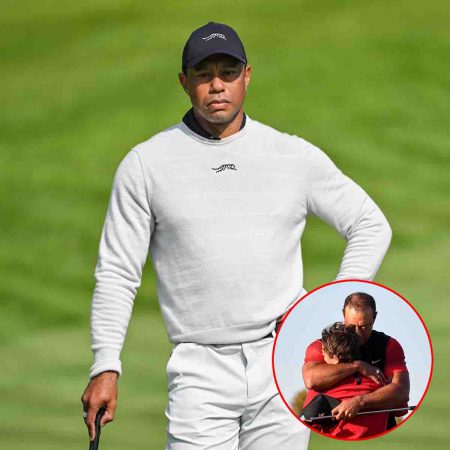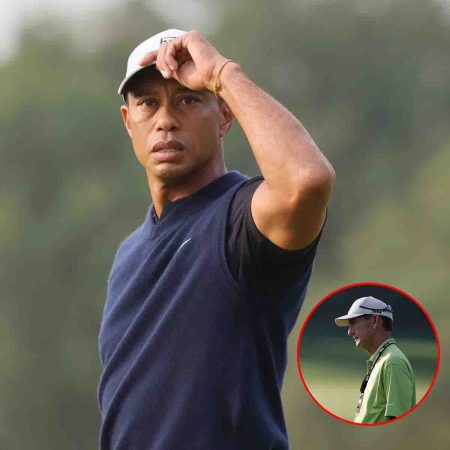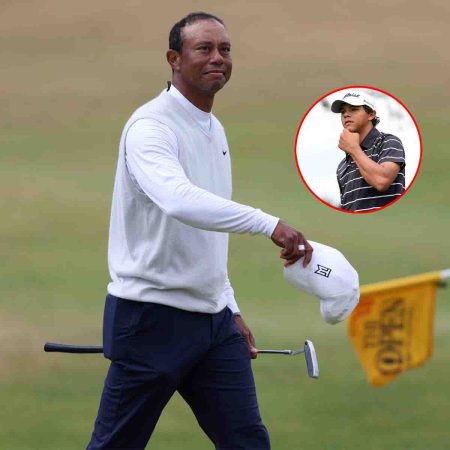
The Golden State Warriors have already defied the NBA’s natural life cycle of team-building. Cores rarely get more than four or five years together before they begin to fall apart, but Stephen Curry, Klay Thompson and Draymond Green have now been teammates for more than a decade.
With four championships over that span, the Warriors have cemented themselves as one of the greatest dynasties in league history. But like all of the dynasties that preceded them, nothing can last forever.
After losing to the Los Angeles Lakers in the second round of the 2023 NBA playoffs, the Warriors as we know them may be no more. The NBA’s new collective bargaining agreement, which takes effect on July 1, all but guarantees that.
The Warriors had a league-high luxury-tax bill of nearly $170 million this past season, just shy of their record-setting $170.3 million tax bill in 2021-22. The new CBA will make it far more difficult for them to maintain that type of payroll—and more painful if they do.
The current CBA features one salary-cap apron set roughly $7 million above the luxury-tax line. Teams above the apron lost access to the non-taxpayer mid-level exception and the bi-annual exception in free agency, and they couldn’t receive players via sign-and-trade. However, they did still have a smaller taxpayer mid-level exception, which the Warriors used this past offseason to sign Donte DiVincenzo in free agency.

The upcoming CBA contains a new second salary-cap apron set $17.5 million above the luxury-tax line. Teams above the second apron will lose access to the taxpayer mid-level exception in free agency, and they’ll face a host of additional restrictions as well, particularly beginning in the 2024-25 offseason.
The 2023-24 salary cap is currently projected to land at $134 million, while the luxury-tax line is projected to be $162 million. That means the second apron would be set at $179.5 million.
Between Stephen Curry ($51.9 million), Klay Thompson ($43.2 million), Jordan Poole ($28.7 million) and Andrew Wiggins ($24.3 million) alone, the Warriors have nearly $148.2 million in guaranteed salary on their books for next season. Add in the guaranteed contracts of Gary Payton II ($8.7 million), Kevon Looney ($8.5 million), Jonathan Kuminga ($6.0 million), Moses Moody ($3.9 million), Patrick Baldwin Jr. ($2.3 million) and Ryan Rollins ($1.7 million), and the Warriors are at nearly $179.4 million, or roughly $125,000 below the second apron.
That’s before factoring in Draymond Green, who can (and likely will) become an unrestricted free agent this summer by declining his $27.6 million player option for the 2023-24 season. DiVincenzo can join Green in unrestricted free agency by declining his $4.7 million player option for next season. If either Green or DiVincenzo walk, the Warriors won’t be able to adequately replace them because of their proximity to the second apron.
If the Warriors re-sign Green and/or DiVincenzo without making any other changes to their roster, they’ll go above the second apron, which will deprive them of access to the taxpayer mid-level exception. They’d be limited to offering only veteran-minimum contracts in free agency, so other teams would easily be able to outbid them for the top role players on the market. Although they’ve found some vet-min gems in recent years—Payton and Otto Porter Jr. were critical cogs to their championship run in 2021-22—it’s rare to land impact players at that price point.
The Warriors thus must decide whether they’re comfortable running back the same group that won only 44 games in the regular season and needed seven games to dispatch the third-seeded Sacramento Kings in the first round of the playoffs before losing to the Lakers in the Western Conference Semifinals. If not, at least one of Curry, Thompson, Wiggins, Poole and Green will likely be wearing a different uniform next season.

If the Warriors and Green come to terms on a new deal, Poole seems likely to be the odd man out. Once viewed as the bridge in the Warriors’ two timelines plan, he might have priced himself out of their long-term future by signing a four-year, $128 million extension last October. Although he averaged a career-high 20.0 points per game during the regular season, his brutal playoff showing raises questions about whether he’s capable of taking the torch from Curry, Thompson and Green at some point.
En route to last year’s championship, Poole averaged 17.0 points per game on 50.8 percent shooting overall and 39.1 percent from deep. This year, he came crashing down to 10.5 points per game on 34.2 percent shooting overall and 27.8 percent from deep. The Warriors started him in Games 3 through 6 against the Kings, but his minutes dwindled against the Lakers, punctuated by a 10-minute no-show in their close Game 4 loss.
“It just wasn’t his night,” Warriors head coach Steve Kerr told reporters after the game about Poole. “He didn’t have it going. We had other guys who were playing well. Moses came in and did a great job, Donte came in and gave us good minutes, Gary obviously gave us a big lift starting the game.”
Although the Warriors might have envisioned Poole as their bridge to the post-Curry era, they already gave up on 2020 No. 2 overall pick James Wiseman at the trade deadline. They sent him to the Detroit Pistons in the four-team deal that brought Payton back to the Bay Area, as they recognized that Wiseman’s developmental timeline wasn’t aligned with the win-now window of Curry, Thompson and Green.
Even if Green walks as a free agent this offseason, the Warriors now might see Poole as their best salary-matching fodder to retool their roster. They could seek to break his contract up into multiple role players to better round out their depth around Curry, Thompson and Wiggins, provided they’re able to find a taker for him.
There likely won’t be easy answers for the Warriors this offseason, which is exactly what the new CBA was designed to do. Expensive contenders will bear the brunt of the pain in an effort to increase leaguewide parity and level the playing field between teams willing to eat nine-figure luxury-tax bills and those that aren’t.
An unprecedented salary-cap spike in 2016 helped the Warriors prolong their dynasty far longer than anticipated, but no such relief is coming this time. As part of the new CBA, the NBA and the National Basketball Players Association agreed to smooth the salary-cap increases stemming from the league’s new national TV contracts, which will take effect ahead of the 2025-26 season. The cap can increase by no more than 10 percent each year, as opposed to the one-time 34 percent jump it took in 2016.

The new CBA will force the Warriors and other free-spending title hopefuls make difficult decisions about which players to retain and which to let go. Regardless of how the Warriors navigate those choices, this offseason will likely bring an end to both their two-timeline vision and their dynasty in general.
Unless otherwise noted, all stats via NBA.com, PBPStats, Cleaning the Glass or Basketball Reference. All salary information via Spotrac or RealGM. All odds via FanDuel Sportsbook.







